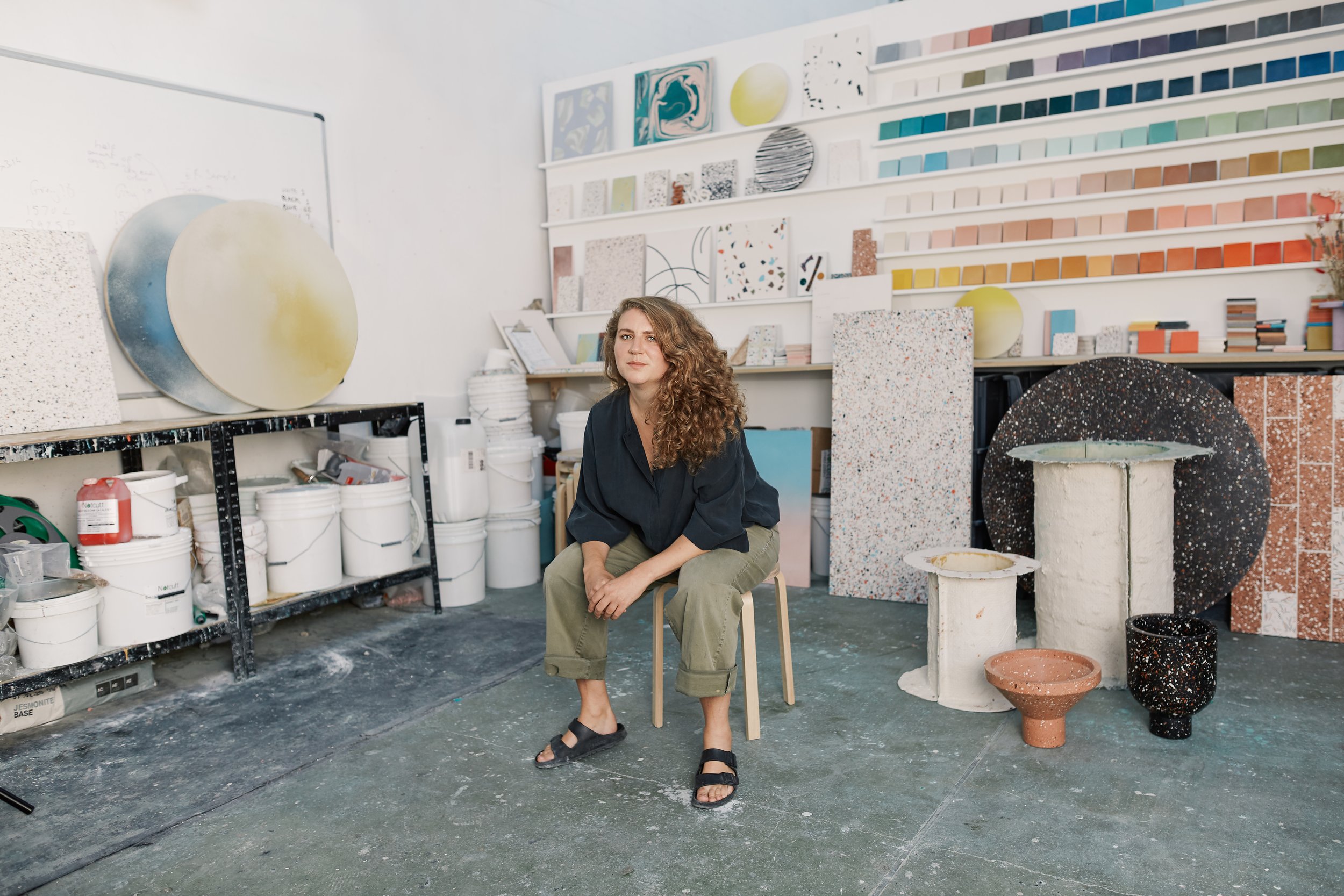Why I closed Olivia Aspinall Studio and the birth of DNGG
I started Olivia Aspinall Studio back in 2015 straight after graduating from a textile design degree at Central Saint Martins. Despite specialising in printed textiles during my course, I spent most of my time collecting rocks from around the UK, creating pigments, and casting surfaces. It was this work that was luckily picked up at my degree show by a couple of different interior designers who were looking to commission bespoke pieces. I had accidentally timed the development of my practice with the resurgence of the terrazzo trend and after much experimentation, failure, and finally success Olivia Aspinall Studio was born.
Over the next 7 or so years I dedicated myself to perfecting my practice, learning how to cast larger and larger pieces, creating unique and perfectly matched colour palettes, and developing new techniques. As well as teaching thousands of people through workshops and a Domestika course. All this time I was working with Jesmonite, a gypsum-based resin because it afforded me the sort of experimentation that I loved.
I had never set out to work with a specific material and fell into using Jesmonite as it allowed me to create the sort of work I was being commissioned for, we became known for our bespoke and bold designs as well as allowing our clients to commission terrazzo surfaces that were hand cast in the UK.
Olivia Aspinall Studio 2019
I was never quite satisfied with the materials we were working with, always wanting to experiment further and always questioning where materials were coming from. I took a masterclass with Katie Treggiden which explored working with waste as a resource. This course touched on lots of the research I have been doing and seemed to fuel my dissatisfaction with the materials I was working with but also fueled my curiosity.
In 2020 covid hit and everything changed. For a few months, business stopped completely, clients disappeared and supply chains halted. It was impossible to get hold of materials to work with even if the clients were commissioning work. Raw material prices increased but project budgets decreased. It was very clear to see the vulnerability of our global supply chains raising more questions for me about the materials we use and how they are moved around the planet.
Dining table | OAS x 2LG
It was over this period that I really started to look at materials and the claims around ‘eco’ or ‘sustainable’ materials within the design world. I started to notice clients requesting ‘sustainable’ surfaces, but not knowing what this meant. Did they want it to be made from waste? Have traveled the shortest distance? Be easily recycled at the end of its life? I started to fully understand the scale of the confusion. People generally wanting to make good decisions but not quite having the available information to do so.
So the storm of covid, its aftermath, and my growing questioning of materials and how they were being marketed finally led me to the decision to close down Olivia Aspinall Studio. It wasn’t a simple journey. At first, I thought I could make the changes and the difference I wanted from within the studio, however, due to the economic climate I was finding it impossible to continue creating in the studio as well as pursue the research and development that I was being drawn to. The closure for me was infinitely harder than the hard work it took to start the studio. I never knew that closing something down would be laden with such guilt and shame. I felt shameful that people thought I was failing. One of the most common comments I received when I explained the closure was people telling me they were disappointed, which wasn’t something I was expecting to hear. As time went by these feelings started to be replaced with feelings of freedom because I now had the time and mental space to pursue the work I was excited about. I loved building Olivia Aspinall Studio and all the opportunities it gave me, but the time was right to move on to the next project.
I spent the next 9 months or so educating myself further around sustainability within business, taking an incredible yet intense course at Cambridge University as well as collating my material research.
And so after a couple of years of percolation Do No Go Gentle was born. My mission with this project is to make available the right information so that creatives and brands can make decisions that will make the world a better place. I want to help people commissioning work or ordering materials to understand the complexities of sustainability and to be able to ask the right questions. Do Not Go Gentle acknowledges the huge challenges we face in reducing our impact on the world, but believes that designers and anyone in the business of creating have the power the lead the change.


